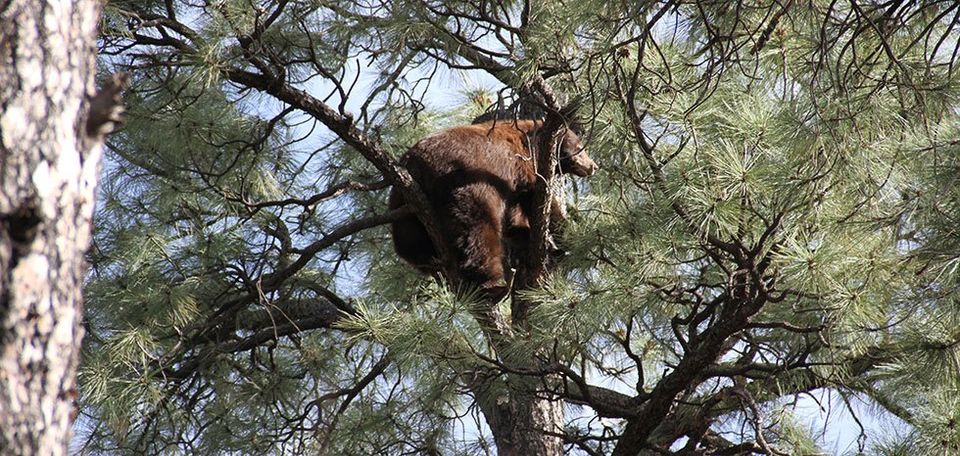Do your part to keep bears from posing a threat and needing to be removed:

PINETOP, Arizona
— The Arizona Game and Fish Department (Department) reminds residents and visitors that black bears are already moving through the forest and that human-bear encounters need to be anticipated.
In 2018, the Department received a record number of bear calls in the Pinetop Region. Almost all of these calls had a common theme: bird feeders and trash. The greatest cause of human-bear conflict is bears becoming habituated to human food sources and garbage. In the wild, bears eat berries, nuts, grasses and insects. Bears are also attracted to human-generated food sources like garbage, bird seed, hummingbird feeders, pet food and fruit trees.
When humans and bears share the same habitat, conflicts can arise. Although the occurrences of bears injuring humans is rare, it is important to be aware of potential interactions that can occur both in the forest and in human-inhabited areas surrounding the forests.
Local municipalities, including the City of Show Low, the Town of Pinetop and Navajo County have local ordinances against attracting bears, coyotes or javelina that can result in a criminal citation.
“Our goal is to have 100% compliance with these ordinances so we don’t have to issue citations. These ordinances were put into place to give us some options when dealing with folks who repeatedly keep attracting bears. Typically, these attractants are trash containers, bird and/or squirrel feeders and dog food. We can’t stress enough how important it is to remove all attractants. This means securing your trash until garbage pickup day and taking your bird feeders down at night. If folks did these two things, our bear calls would be significantly reduced -- resulting in fewer human-versus-bear encounters,” says Eric Podoll, wildlife manager for the Department. “For public safety reasons, we will continue to remove and relocate bears from urban areas as a last resort.”
Arizona has had one fatal bear attack, which occurred in Pinetop in 2011. However, there are numerous reports each year of bears in close proximity to humans that could lead to serious injury or even death.
Bears that become habituated to human-related food sources quickly lose their fear of humans and associate people and their dwellings with easy food sources.
The Department spends considerable time and resources removing or relocating habituated bears to minimize the risk to people. However, removing a bear does not solve the problem. If the original bear attractant is not removed, another bear will likely move into the area. Also, approximately half of all bears that are removed travel great distances and return to the same area where it was captured.
Garbage stored outside is the largest bear attractant. A study conducted by the town of Pinetop-Lakeside in the 1990s found that homeowners who left their garbage outside had a 70-percent chance of being visited by a bear. If the residence was near a thickly wooded area or at the edge of a housing development, the chances were even higher. Just by storing in a garage or shed until the morning of trash pickup, the chance of a bear visit dropped to two-percent, regardless of where the homeowner lived.
Do your part to keep bears from posing a threat and needing to be removed:
- Keep all trash inside a secured area until collection day. If that’s not possible, keep food waste in a bag in the freezer and place those in the trash as close to collection time as possible.
- If you’ll be out of town or are a weekend visitor, ask a neighbor to place your trash out on collection day.
- Take bird feeders down at night.
- Keep pet food inside or remove all uneaten food.
Game and Fish’s bear management policy was developed by wildlife biologists using science, research and best management practices. The policy uses four categories to classify bears based on behavior, age, sex and threat to human safety. The policy clearly dictates the action that will be taken depending on these criteria. The public may be asked to remove the attractants; the bear may be captured or relocated or the bear may be lethally removed if it poses an immediate public safety threat or if it is an adult male bear.
For questions or to obtain a brochure on living with bears, visit the Department’s Pinetop Regional office. More information can be found online at www.azgfd.com/Wildlife/LivingWith.











